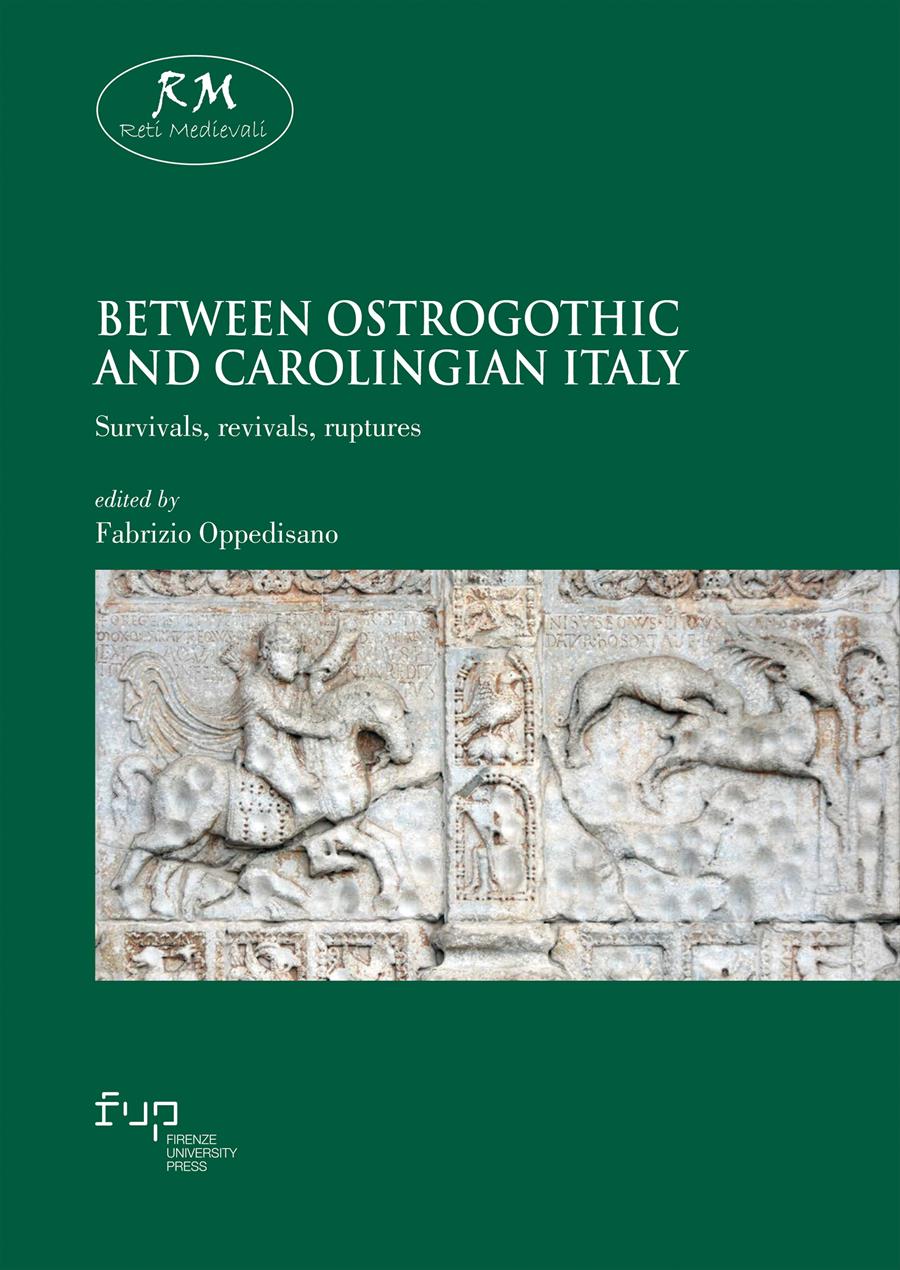- Between Ostrogothic and Carolingian Italy
- Edited by Fabrizio Oppedisano
Epigraphic Stratigraphy: is There Any Trace of the Ostrogoths in Early Medieval “Layers” (6th-9th Century)?
- Flavia Frauzel
- © 2022 Author(s) |
- CC BY 4.0
- DOI: 10.36253/978-88-5518-664-3.11
The short but significant experiment of the Ostrogothic Kingdom in Italy left politically ephemeral albeit culturally surprisingly durable traces in the peninsula. Among them, epigraphy takes centre stage when discussing decrees, laws, and public documents, which are a direct expression of the rulers’ will to gain greater visibility and disseminate their voice. However, epigraphy is also crucial to knowing the names, professions, ideas, and other concepts relating to the ordinary people. This contribution aims to examine a number of issues concerning controversial Germanic names datable between the VIth and VIIth century AD, and variably assigned to Ostrogoths, Lombards, and even Carolingians characters; through the lens of these durable materials, which – ironically enough – are monuments both recording contemporary propaganda and everyday life facets, the article will also explore the graphic and epigraphic changes which occurred in Italy between the VIth-IXth centuries.
- Keywords:
- Early Middle Ages,
- Late Antiquity,
- Ostrogoths,
- Lombards,
- Germanic names,
- Epigraphy,
- Paleography,
CAMNES, Center for Ancient Mediterranean and Near Eastern Studies, Italy
Chapter Information
Chapter Title
Epigraphic Stratigraphy: is There Any Trace of the Ostrogoths in Early Medieval “Layers” (6th-9th Century)?
Authors
Flavia Frauzel
Language
English
DOI
10.36253/978-88-5518-664-3.11
Peer Reviewed
Publication Year
2022
Copyright Information
© 2022 Author(s)
Content License
Metadata License
Bibliographic Information
Book Title
Between Ostrogothic and Carolingian Italy
Book Subtitle
Survivals, revivals, ruptures
Editors
Fabrizio Oppedisano
Peer Reviewed
Number of Pages
262
Publication Year
2022
Copyright Information
© 2022 Author(s)
Content License
Metadata License
Publisher Name
Firenze University Press
DOI
10.36253/978-88-5518-664-3
ISBN Print
978-88-5518-663-6
eISBN (pdf)
978-88-5518-664-3
eISBN (xml)
978-88-5518-666-7
Series Title
Reti Medievali E-Book
Series ISSN
2704-6362
Series E-ISSN
2704-6079
